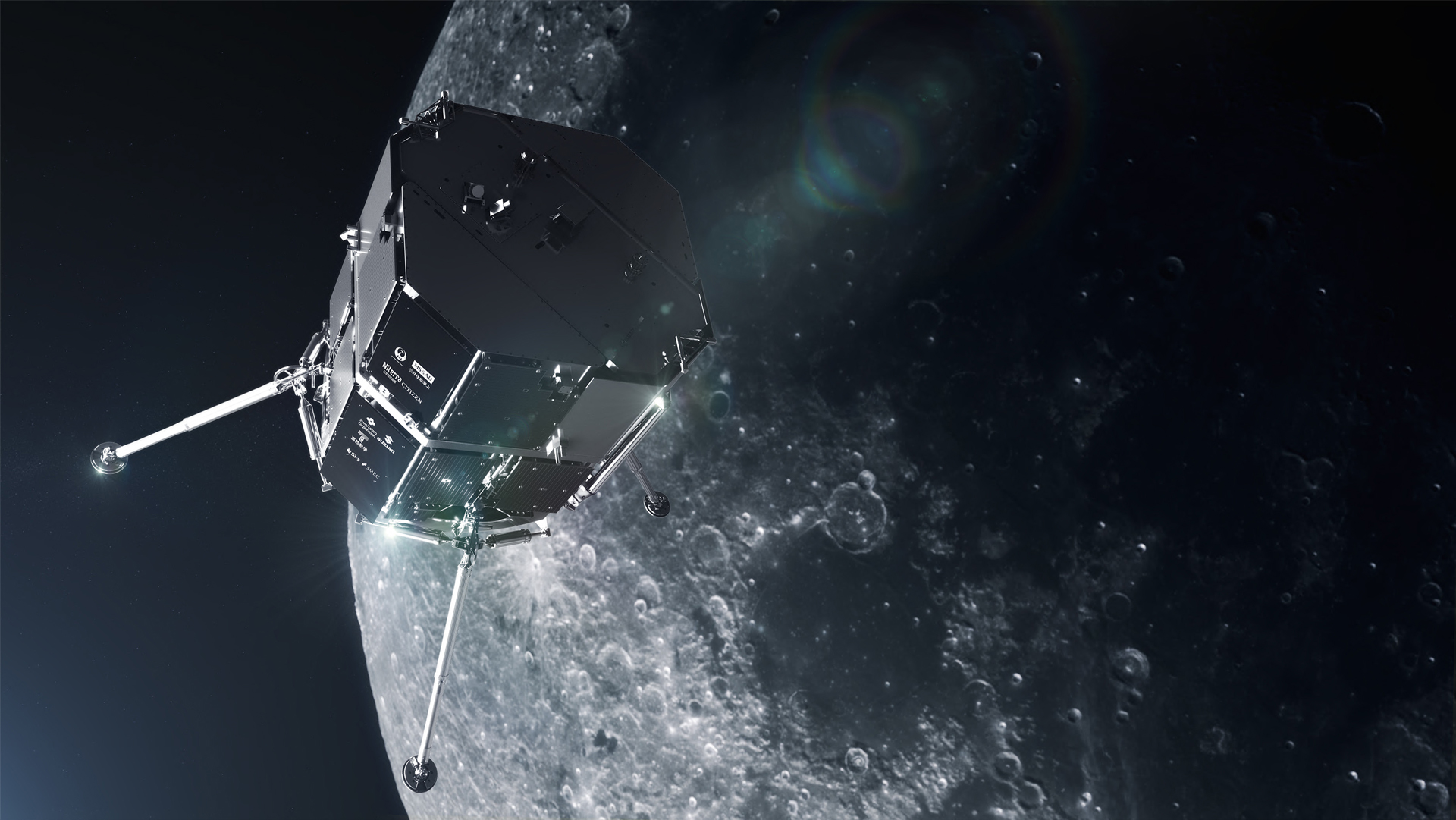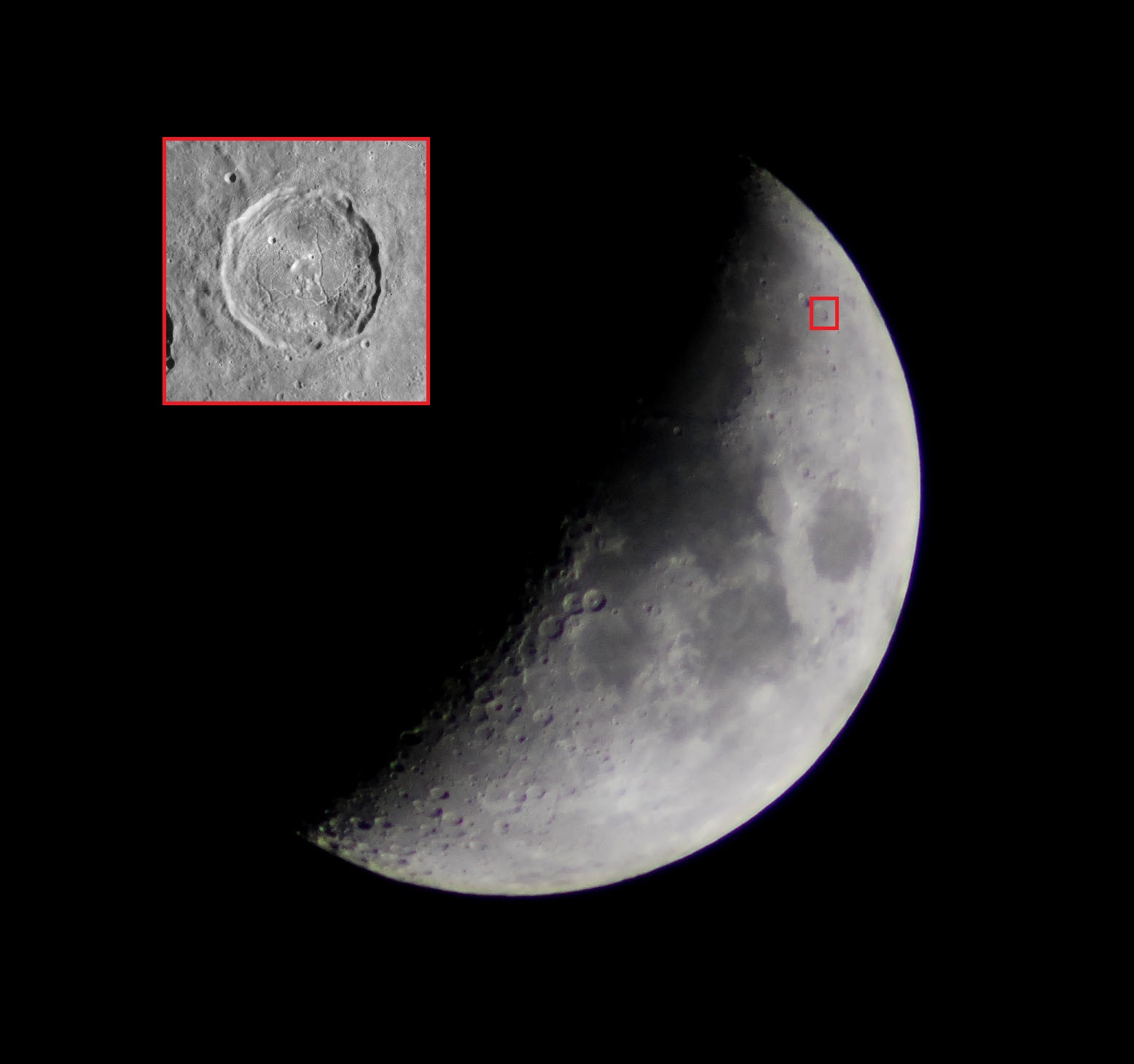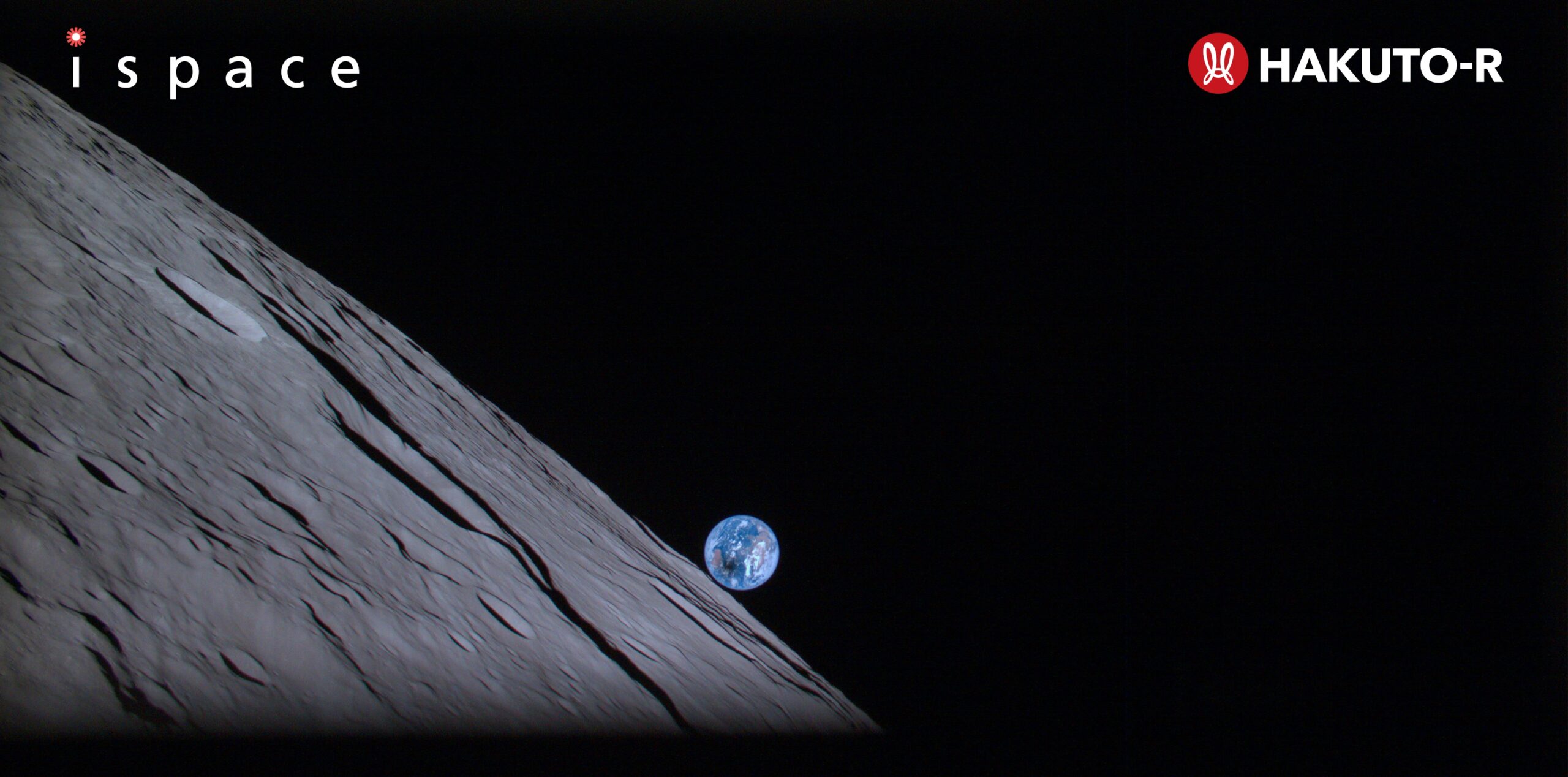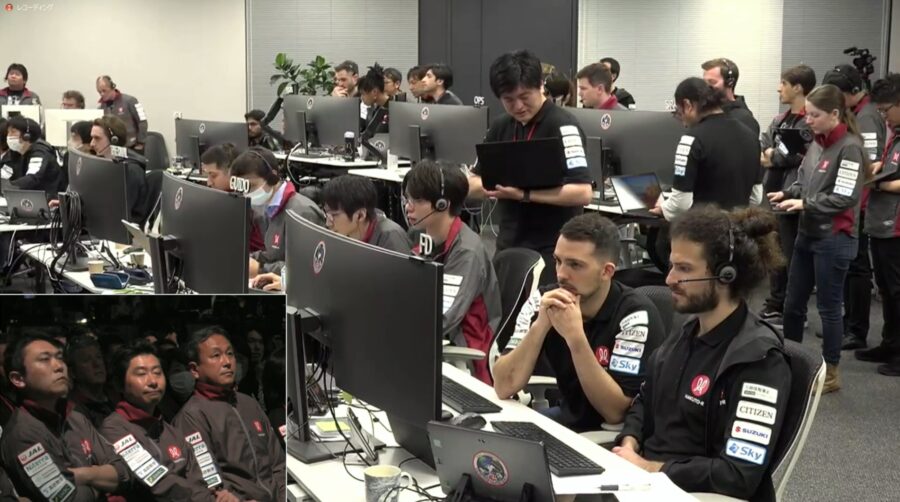The Hakuto R lander, built by Tokyo-based iSpace, was to be a commercial mission to the Moon, but it has yet to phone home on landing day.
Updates:
(April 26th): iSpace has released a statement acknowledging the loss of the mission, noting that although final telemetry from Hakuto R showed the lander in a vertical position on final approach, the descent speed increased rapidly in the final seconds. The company concludes, “There is a high probability that the lander eventually made a hard landing on the Moon's surface.”
The lunar lander dubbed Hakuto R, built by the Tokyo-based company iSpace, fell silent at around 12:40 p.m. EDT (16:40 UT) — right around the time it was heading for Atlas Crater on the Moon. Mission controllers are investigating, but there is only a small chance that the lander could power up its high gain antenna and contact Earth.

iSpace
ispace developed its Hakuto R lander as part of the Google Lunar XPrize competition to land on the Moon. Although the 2018 deadline passed unclaimed, ispace continued to develop the lander. Another X Prize legacy, the Beresheet lander built by Isreal-based SpaceIL, crashed on the lunar surface in early 2019.
AMSAT-DL is broadcasting a feed of the deep space scan for the signal live. Hakuto means ‘white rabbit’ in Japanese, an animal often associated with the Moon in east Asian mythology.
The landing was set for today, April 25th, and ispace carried the landing live:
Hakuto R's landing site was to be in Atlas Crater, which is located on the lunar nearside near Mare Frigoris. The European Space Agency’s Tracking Station Network (ESTRACK) was providing critical tracking assets dedicated to the mission.

David Dickinson; inset: NASA
The Long Path to the Moon
The mission took the slow route to the Moon; Hakuto R launched with NASA’s Lunar Flashlight orbiter atop a SpaceX Falcon 9 rocket from Cape Canaveral on December 11, 2022. First in a geostationary transfer orbit, the mission gradually raised its orbit through a series of small engine burns until it was eventually captured in orbit around the Moon. The mission entered lunar orbit on March 21st.
“Our mission is commercial in nature, carrying payloads for customers,” said Andrew Ames (ispace). “We reduced fuel capacity to increase payload space to carry more customer payloads. To do this we planned a fuel efficient trajectory that took approximately 5 months to travel from Earth to the Moon.”

ispace
Before landing, Hakuto R sent us an image of Earth rising over the lunar limb, taken on April 20th during last week’s rare hybrid annular-total eclipse. The image shows the tiny black dot of the Moon’s shadow crossing near Australia:

ispace / Hakuto
The Hakuto R lander was a proof-of-concept mission for ispace. The solar-powered mission was expected to function for 14 days, from lunar sunrise to sunset, with landing set to coincide with local sunrise. But even if the mission was a loss on landing, it accomplished eight out of its 10 objectives, right up through insertion and operation in lunar orbit.

ispace
Hakuto R would have carried several payloads to the lunar surface, including the United Arab Emirates National Space Programme’s Rashid rover. The 10-kilogram (22 pound) rover carried cameras and Langmuir probes, designed to study surface dust and local plasma properties on the lunar surface.
Two Canadian companies, Canadensys Aerospace and Mission Control Space Services, provided imaging instruments and services for Hakuto R. Also onboard was Japan’s SORA Q, a small transformer robot. This unique, baseball-shape rover was equipped with a camera. Finally, the lander carried a disk with the song Sorato by the Japanese rock band Sakanaction.
The company ispace plans to send a second lander to the Moon, perhaps as early as 2024.
 8
8
Comments
Anthony Barreiro
April 26, 2023 at 5:53 pm
The picture of the Earth with a solar eclipse over the lunar limb is awesome. I wish somebody would put a camera on the lunar nearside transmitting a continuous live video image of the Earth. It would be lovely to watch sunrise and sunset moving over the Earth, solar eclipses as seen here, and lunar eclipses with the Earth fully encircled by the red light of sunrise and sunset.
You must be logged in to post a comment.
Glenn
May 8, 2023 at 7:56 pm
That's Oz to the left of the shadow so photo time is a hour or more after our Exmouth totality. A Mooncam would be terrific if someone else puts one there. LOL Of course the sunrise or sunset terminators on Earth would take over two weeks to cross the disc while Earth rotates across them. Yes, the Earth during a lunar eclipse will be seen from Luna to produce a solar eclipse with the Terran atmosphere refracting the red component most to make a ring of fire around the planet. Earth would be about 2 degrees wide in the sky with the red ring a blazing 3 arc seconds. In our dreams LOL
You must be logged in to post a comment.
Bertrand53
April 28, 2023 at 10:36 am
I remember vividly the description of the moon by the crew of Apollo 8 (I am 70!) and this picture brings it all back: Frank Borman: "The moon is a different thing to each one of us. I think that each one of us—each one carries his own impression of what he’s seen today. I know my own impression is that it’s a vast, lonely forbidding type existence, great expanse of nothing, that looks rather like clouds and clouds of pumice stone, and it certainly would not appear to be a very inviting place to live or work." Jim Lovell: "The vast loneliness up here of the moon is awe inspiring and it makes you realize just what you have back there on Earth. The Earth from here is a grand [oasis] to the big vastness of space."
You must be logged in to post a comment.
Bertrand53
May 27, 2023 at 11:26 am
Addendum:
With the app "MoonGlobeHD" and the time of the eclipse, I have been able to reproduce the scene. The fresh crater is Giordano Bruno, near the edge of the large eroded ancient crater Harkhebi.
You must be logged in to post a comment.
David DickinsonPost Author
May 28, 2023 at 10:43 am
Excellent work, good to know the IDs of those craters in the image.
You must be logged in to post a comment.
Bertrand53
May 30, 2023 at 9:40 pm
Finding a way to have the image of the earth at the lunar limb, at the time of the eclipse, was quite straightforward. But you could have this angle from anywhere around the moon! The most useful clue was the position of Autralia on the Hakuto-R image of the earth. So I traveled around the moon, letting the image of the earth rotate as I moved north or south, and found the spot! There was Giordano Bruno near the rim of Harkhebi.
You must be logged in to post a comment.
Jlindsay
May 15, 2023 at 7:53 am
Nice try, if the shadow of the moon was on the earth that would mean that the sun would be behind the camera position. The shadows on the moons surface are on the near side of their respective objects, which means the light source is camera front.
You must be logged in to post a comment.
Monica Young
May 15, 2023 at 9:58 am
Hi Jlindsay, interesting, I see the shadows as being *behind* the objects.
You must be logged in to post a comment.
You must be logged in to post a comment.